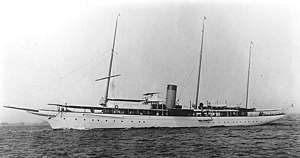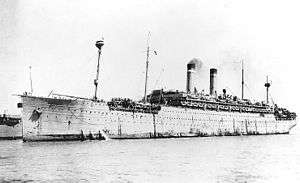Section patrol craft
A Section Patrol Craft was a civilian vessel registered by the United States Navy for potential wartime service before, during, and shortly after World War I.


The SP/ID registration system
In 1916, with World War I raging abroad, the U.S. Navy began a registry of privately owned pleasure craft and yachts that were available for patrol service in the event the United States was drawn into the conflict, which it eventually entered on 6 April 1917. "Section Patrol" ("SP") numbers were assigned in a series beginning with SP-1 and ultimately extending to well over 4000.
As the registration process continued, other types of ships and craft (such as cargo ships, tankers, and passenger ships) were included which were not suited or intended for patrol duty and for which the "Section Patrol" designation was clearly inappropriate, and these were generally given "Identification" ("ID") numbers in the same series as the "SP" numbers. In addition, some vessels that were numbered with an "SP" prefix before 1918 later had that prefix changed to "ID". Many of the ships and craft assigned SP or ID numbers had no Navy service, while others that were acquired and employed by the Navy received no numbers.
The registry, and the SP/ID number series, was continued at least into the early 1920s, with new numbers being assigned to ships completed or examined after World War I ended on 11 November 1918. The latter category included some ships that served in the Navy without SP or ID numbers between 1917 and 1919.
SP/ID numbers and U.S. Navy hull numbers
The SP and ID registry numbers were not U.S. Navy "hull numbers," which would not be formally adopted until 17 July 1920. However, like hull numbers, the SP and ID numbers were used for record-keeping purposes and were often painted on the exterior of vessels (especially patrol types) to facilitate identification. They can therefore be considered precursors of the U.S. Navy hull number system instituted in July 1920 and still in use today.
References
